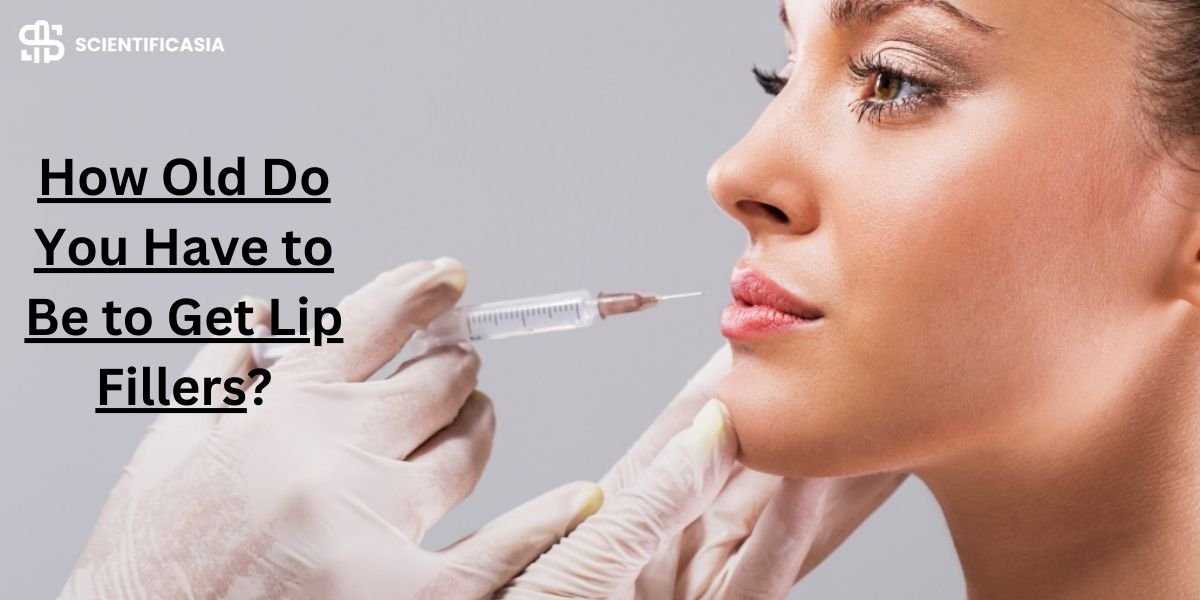Lip fillers have a boost in popularity, offering a non-surgical approach to enhancing lip volume and shape. This has naturally led to many questions, the most common being, “How old do you have to be to get lip fillers?” While a simple numerical answer might seem sufficient, the reality is more nuanced, encompassing legal frameworks, professional medical guidelines, the difficulty of facial development, the importance of emotional maturity, and a thorough understanding of the procedure itself.
The Legal Framework: Minimum Age Requirements
In most authority, the legal age for cosmetic procedures like lip fillers is 18. This threshold is grounded in the principle of legal adulthood, recognizing an individual’s capacity to make informed decisions about their own body. These age restrictions are designed to safeguard younger individuals from potentially harmful or irreversible procedures before they possess the maturity and understanding necessary for such choices.
- United States: The FDA has not explicitly established a minimum age for dermal fillers. However, the vast majority of licensed practitioners in the U.S. adhere to the recommendations of leading medical organizations like the American Society of Plastic Surgeons (ASPS), which strongly advise against performing these procedures on anyone under 18. While some states might have specific regulations regarding parental consent for minors, the prevailing practice is to wait until at least 18.
- United Kingdom: The UK has taken a firm stance on this issue, enacting legislation that explicitly prohibits the administration of injectables to anyone under 18, even with parental consent. This law, implemented in October 2021, reinforces previous guidelines and underscores the importance of protecting young people.
- Australia and Canada: Similar to the UK, both Australia and Canada generally restrict the use of dermal fillers to individuals who are 18 years of age or older. While exceptions might be made in very limited circumstances involving medical necessity, such cases are extremely rare and require stringent justification.
- Other Countries: The 18-year-old minimum is a common standard in many European and Asian countries. However, it is absolutely essential to verify the specific regulations within your region, as they can vary. Don’t assume; always confirm.
Beyond the Legal Minimum: Professional Guidelines and Best Practices
Even when an individual meets the minimum legal age requirement, reputable clinics and practitioners often implement their own internal guidelines that go beyond the legal standard. These guidelines take into account a range of factors, including the individual’s emotional maturity, the stage of their facial development, and their specific motivations for seeking lip fillers. A truly responsible practitioner will prioritize the patient’s long-term well-being above all else and will not hesitate to advise against the procedure if they believe it’s not in the patient’s best interest, regardless of whether they meet the legal age requirement.
Why Age Matters: The Interplay of Physical and Psychological Factors
Age is not merely a number; it’s a critical factor that significantly influences both the safety and the potential success of lip filler procedures.
- Facial Development: The human face undergoes significant developmental changes throughout adolescence and well into early adulthood. Introducing fillers before the face has reached its full maturity can lead to unpredictable and potentially undesirable outcomes in the long run. These can include asymmetry, an unnatural appearance, or even interference with the natural growth patterns of the face.
- Psychological Readiness: Younger individuals, particularly teenagers, are often highly susceptible to the influence of social media trends, peer pressure, and often unrealistic beauty standards perpetuated by popular culture. Cosmetic procedures require careful and mature decision-making, and younger individuals may not yet fully grasp the potential risks, the long-term implications, or the possibility of regret. It’s vital to ensure that the decision to pursue lip fillers is a well-considered one, driven by personal desire and self-acceptance, and not by external pressures.
- Long-Term Impact: Although lip fillers are not permanent, they can still have lasting effects on the structure and appearance of the lips. Starting these procedures too early in life may lead to overuse or an unhealthy reliance on fillers, which can ultimately distort natural facial features over time.
Risks Specific to Younger Individuals
Younger individuals who choose to pursue lip fillers face a distinct set of risks:
- Unrealistic Expectations: Teenagers and young adults may develop unrealistic expectations based on the often-filtered and idealized images they see on social media or the heavily promoted appearances of celebrities. This can lead to disappointment and dissatisfaction when their own results don’t align with these unrealistic ideals.
- Overfilling: Younger patients may be more inclined to request excessive amounts of filler, seeking to achieve an overly “plumped” look. This can result in an unnatural and sometimes even grotesque appearance, as well as a range of potential complications, including lumps, bumps, and asymmetry.
- Emotional Impact: Cosmetic procedures, even minimally invasive ones, can have a significant emotional impact, particularly on younger individuals who may not yet fully understand the implications or the potential for regret. It’s crucial to consider the psychological well-being of young people considering these procedures.
The Ideal Age and Exploring Alternatives
While the legal minimum age is generally 18, many experts suggest that the ideal age for lip fillers is somewhere between 25 and 35. By this point in life, facial development is typically complete, and individuals are more likely to have the emotional maturity and financial stability necessary to make such decisions responsibly.
For younger individuals who are not yet ready for lip fillers, there are several non-invasive alternatives for worth exploring:
- Lip Plumping Glosses: These temporary products create a fuller appearance by stimulating blood flow to the lips.
- Lip Exercises: Specific facial exercises can help to define and tone the lips naturally.
- Makeup Techniques: The strategic use of lip liners, highlighters, and overlining techniques can create the illusion of fuller lips.
- Hydration and Care: Keeping your lips well-moisturized and healthy can significantly enhance their natural appearance.
You can also see: How Long Does Lip Filler Last?
Choosing a Practitioner and the Importance of Consultation
Selecting a qualified and experienced practitioner is of paramount importance, regardless of the patient’s age. Look for a licensed medical professional, such as a doctor, nurse, or dentist, who has specialized training and extensive experience in administering lip fillers. A thorough consultation is essential. This consultation should provide an opportunity to discuss your goals, have your facial features assessed, and determine whether lip fillers are indeed the right choice for you. A responsible and ethical practitioner will prioritize your safety and well-being above all else and will not hesitate to advise against the procedure if they believe it is not appropriate or if they have any concerns.
Conclusion
The question of how old you have to be to get lip fillers is complex. While the legal age is generally 18, it’s essential to consider facial development, emotional maturity, and a comprehensive understanding of the procedure. Choosing a reputable practitioner who prioritizes your safety and well-being is absolutely crucial. Making a personal choice with lip fillers requires responsibility and a clear understanding of all the factors involved.












